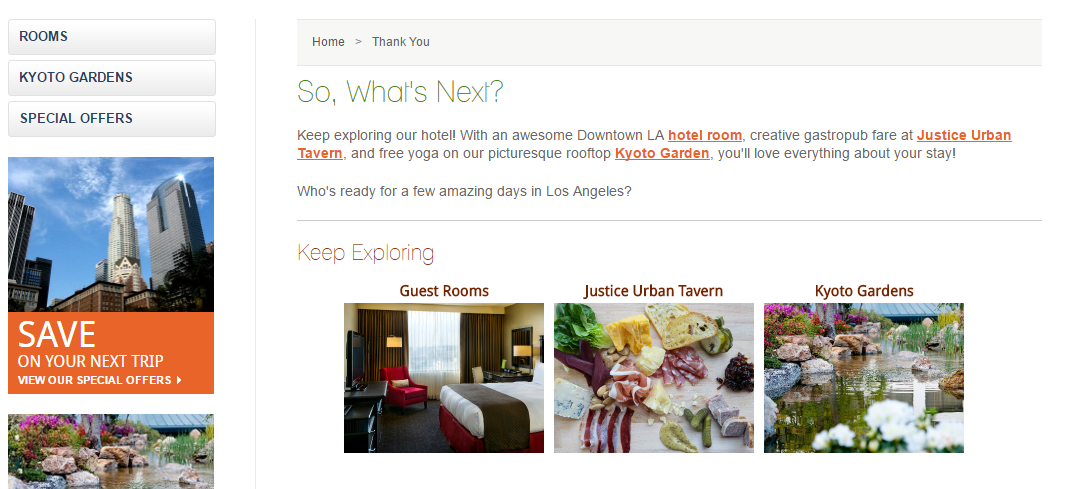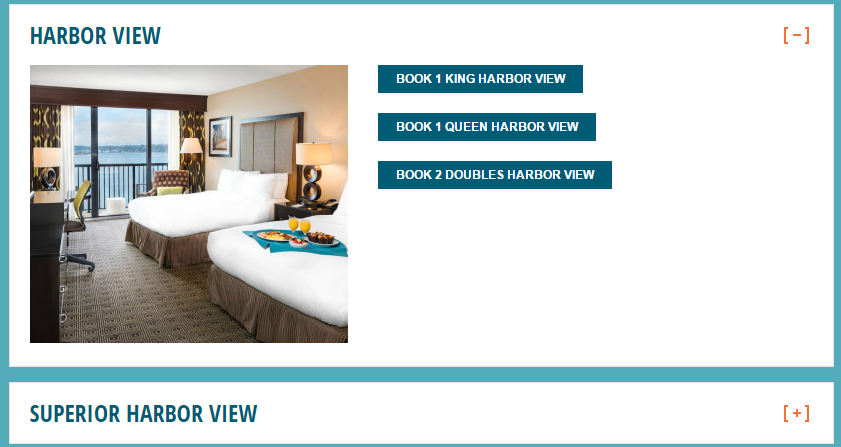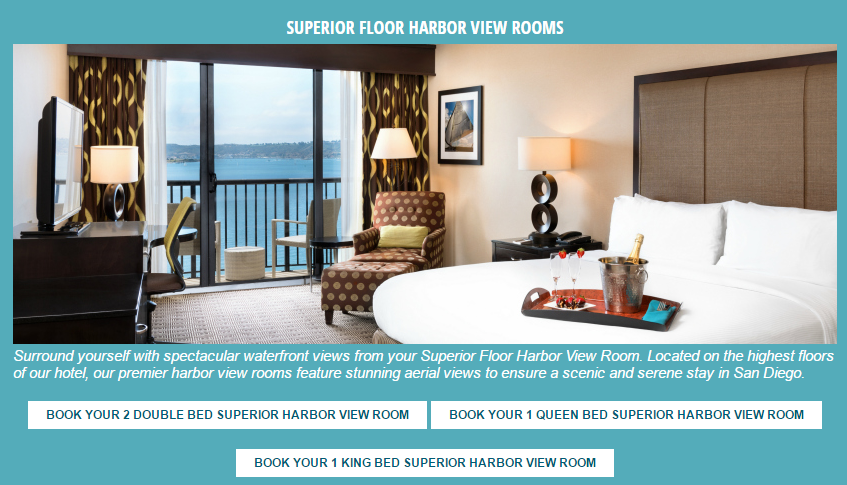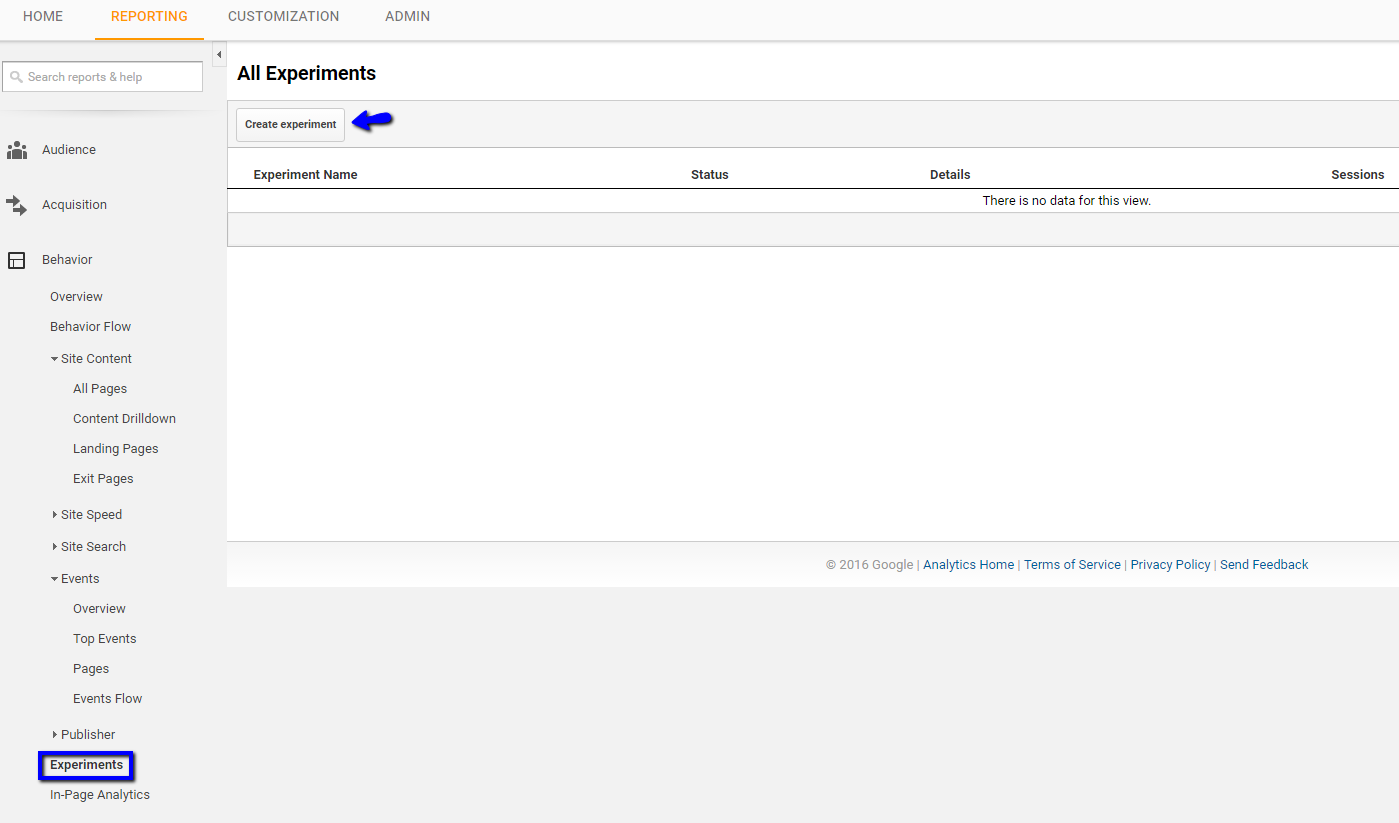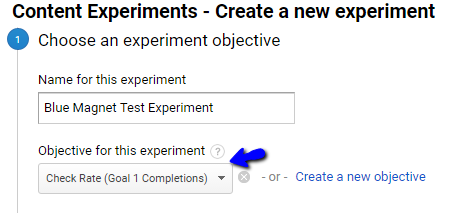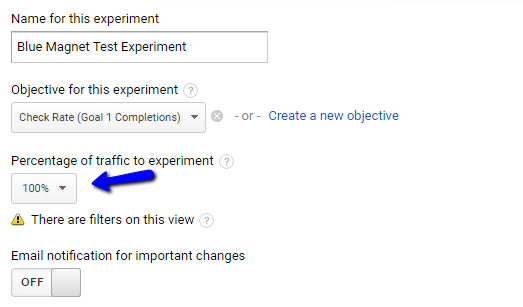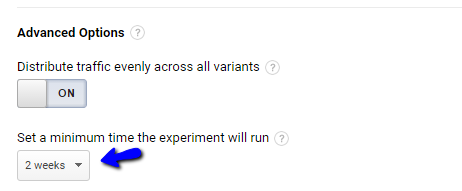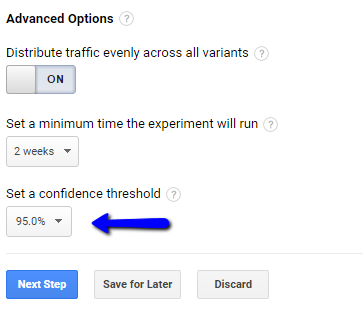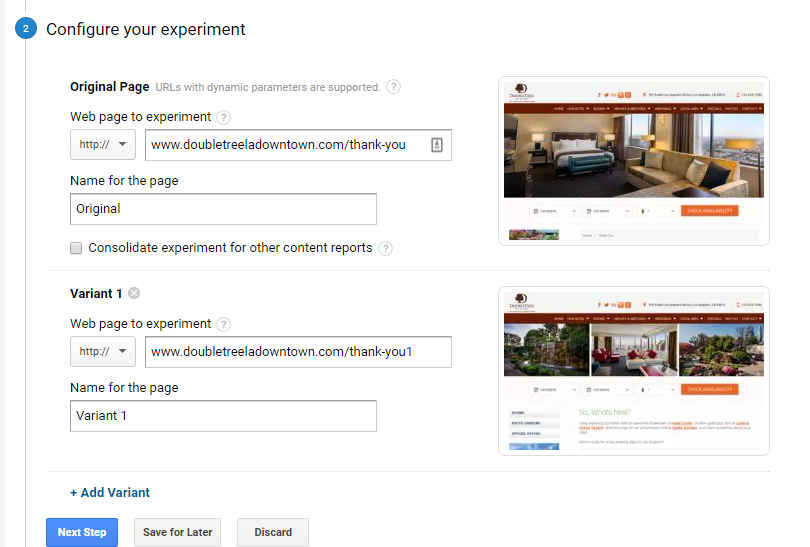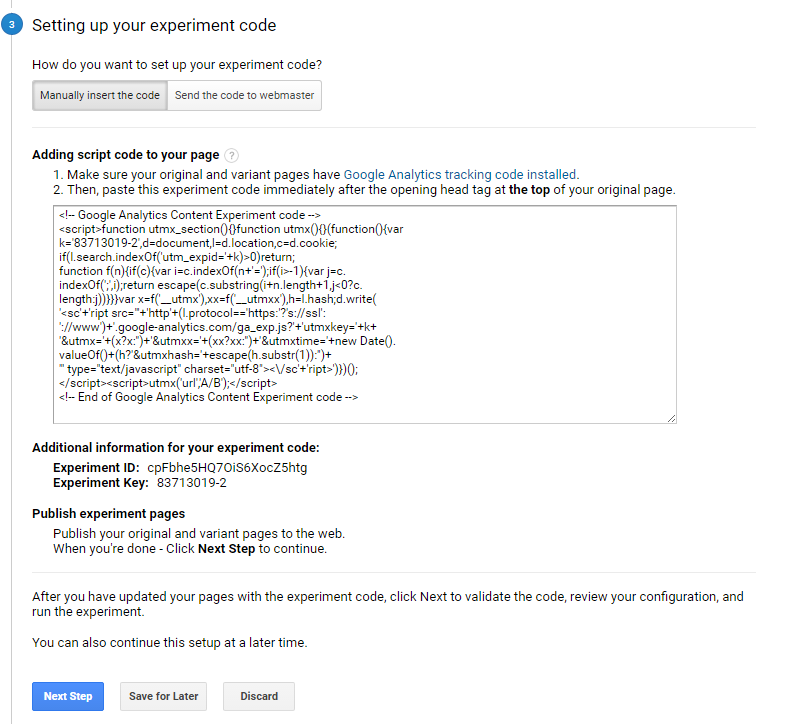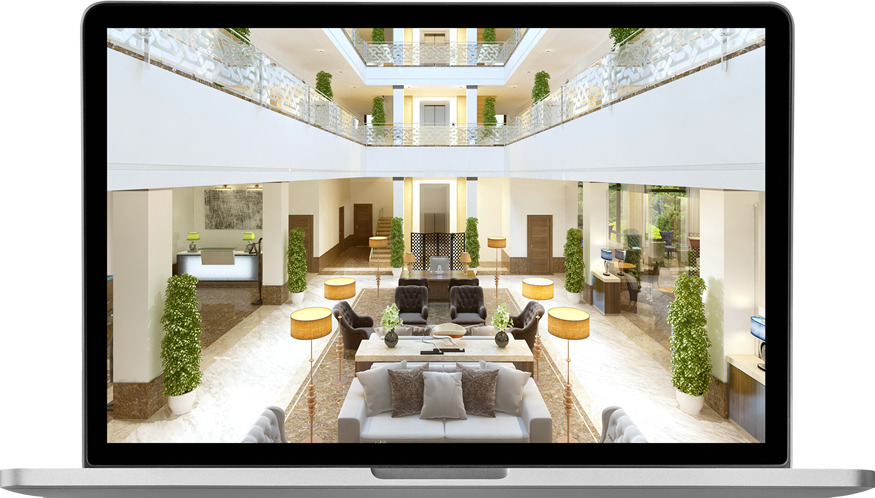You have an awesome hotel with a great website and you are looking to take your content to the next level. You know that your hotel’s website is a phenomenal tool for reaching new audiences and driving bookings for your property. You are even known to dig into your data, create awesome content, and enthusiastically wait for your landing page to appear on the prized first search engine results page. In short, you care about your online presence and want to get the most out of your efforts.
But at the end of the day, who’s to say what constitutes good content? For a high-level understanding of how your site is performing, a few key reports will let you know if people are finding your page, engaging with your content, and checking for room availability. But these reports do not necessarily tell you why.
Let’s be real. Taste is subjective, and we all have different notions of what’s great, what’s passable, and what stinks. So how do you avoid the existential rabbit hole of second guessing your own content? How does one ward off the dread brought on by the countless variables of subjectivity? In short, how can you get a concrete, data-based answer to the omnipresent question, “Is my content good, and can I objectively improve it?”
To objectively test your content and effectively optimize your hotel website for conversions, conduct A/B experiments through Google Analytics. By testing different variations of your content, you can make data-driven decisions to improve your website’s user experience and drive bookings for your hotel. Take a look at our beginner’s guide to content experiments and take your content to the next level!
So, What is A/B Testing and How Do Content Experiments Work?
Google defines their content experiment framework as a tool that allows you to “test almost any change or variation to a website”. These tests let you compare numerous versions of your content against each other to help you better understand your website, connect with your audience, and achieve your hotel’s unique goals. By running multiple versions of the same content at the same time, A/B tests objectively show which content most effectively drives conversions, prevents bounces, and keeps users engaged with your website. So if you have a radical formatting idea for your specials page, test it in real time against your current specials page to see which version yields the most engagement and drives the most reservations!
Once you have conceived your hypothesis and created variant content to test, Google takes care of the heavy lifting. After you have set up the experiment in Google Analytics (more on this later), Google will deliver the original and variant versions of your content to different users. You can determine the percentage of traffic that sees each page, and Google will record user activity in Analytics. As the experiment runs, Google will compile foolproof reports in real-time to help you make data-driven content decisions to improve the effectiveness of your hotel’s website.
Setting up A/B tests is easy, but before we get into the granular details, let’s take a look at the benefits of running content experiments on your website.
What is the Benefit of A/B Testing?
Testing different versions of your content will objectively tell you which content resonates with your specific audience and which content does not. By understanding which image strategies, page layouts, verbiage, and on-page elements most effectively drive conversions, you can optimize your website for maximum conversions. Whether you want to increase room reservations, meeting RFPs, wedding inquiries, email sign-ups, or social media followers, the results of your A/B tests will provide data-driven insights about the most effective ways to accomplish your hotel’s goals.
Driving Revenue for Your Hotel
Content experiments allow you to more effectively pinpoint what drives conversions for your website. By objectively determining which content formats generate the most conversion clicks, you can optimize your website accordingly. If you’re serious about maximizing the ROI on your digital marketing efforts, take full advantage of A/B testing to deliver the highest converting version of your website to your potential guests.
Ensuring a Data-Driven Approach
Design is subjective. Different images, phrases, and formats resonate with different people, and it is difficult to know which content works best for your website without running content experiments. By conducting A/B testing, you will have hard data to inform you what constitutes great content for your specific website. Objective data also removes your personal bias from the equation, allowing your to deliver content that works for your audience.
Continually Improving UX
By optimizing your content for conversions, you are making strides to deliver the best user experience possible. As Google’s search algorithm increasingly values positive user experience in its organic search results, your continually honed content will also help your stay optimized in the changing landscape of organic search.
Unearthing Unexpected Insights
Sometimes your experiments will yield unexpected results. If your A/B test does not generate the spike in conversions you hoped for, other metrics can help you better understand your users and your website. By analyzing the bounce rates, on-page clicks, and conversion rates for other site goals (like RFP submissions), your data can provide secondary takeaways to help improve your hotel’s website.
What Can I Test? Or Better Yet, What Should I Test?
Just about anything! You can experiment with different design elements, page formats, image strategies, functionality, copy choices, calls to action, page headers, and a host of other on-page variables. However, before you run a test, you need a hypothesis. Do you think that a certain functionality is impeding your page’s ability to drive conversions? Or maybe you think a few design tweaks will reduce your bounce rate and increase engagement. You know your site best – if you have an idea rolling around in your head, put it to the test!
Content Strategy Experiments
Hoteliers can A/B test nearly every on-page element on independent hotel websites. A page’s formatting, copy, and image strategies all contribute to a user’s understanding of your hotel and influence their willingness to book. Test any of these variables with a content experiment to see how they contribute to your website’s ability to convert website visitors into hotel guests.
Example: Copywriting
What makes for good copy for your hotel? Should you deliver a hard sales pitch or lure potential guests with evocative language? Conduct a content experiment to see which approach best resonates with your audience. Your experiment will give you plenty of data to make informed, objective, and conversion-driven decisions about your website’s copywriting strategy.
Example: Improving Sales Funnels
Does your content drive conversions or does it create friction in the sales funnel? Test new ways of streamlining your sales funnel to determine a proven method for capturing the maximum number of potential bookings.
For example, Blue Magnet tested a new Thank You page strategy to see if we could most effectively funnel potential guests to our highest-converting pages. We found that our variant page much more successfully kept users in our designated sales funnel.
Original Thank You Page
As you can see, this page is fairly thin and does not encourage guests to continue to explore the hotel upon checking room availability:
Variant Thank You Page
The variant version employs callout boxes, text links, and an innerpage navigation to re-introduce users to the booking funnel:
Example: Testimonials
Studies show 63% of consumers say that they are more likely to make a transaction if a website has ratings and reviews. That’s a huge number and a great indicator that you should incorporate guest reviews into your content. Run A/B tests for different testimonial formats and placements to ensure the maximum boost in conversions for your site.
Image Strategy Experiments
Studies show that strong image strategies typically lead to higher conversion rates across various platforms and industries. That said, every website and audience is different. Use A/B testing to improve your image strategy and drive conversions through-data driven photo choices.
Example: Text Overlays
Text overlays on images are great ways to deliver additional information, add unique flair to a page, or incorporate guest testimonials. But do they make a difference? Put it to the test! Run a content experiment to determine if overlays increase, hinder, or have no effect on your website’s conversion rates.
For example, you can test to see if evocative calls to action on your images increase the RFP conversion rates and lower bounce rates for a meeting space with awesome skyline views.

Example: Mobile Images
More than half of all searches are conducted on mobile devices, and it’s massively important to create an intuitive user experience for the majority of searchers. Run an A/B test to see if image-rich mobile pages improve conversion rates or pose a barrier to bookings on account of slower load times and increased scrolling.
Functionality Experiments
Interactive, on-page elements can lend a cutting edge, modern feel to your website and foster engagement with your content. Conversely, too many interactive elements can create confusion and reduce your site’s ability to drive conversions. To truly know how your accordions, pop-up boxes, and other interactive elements are affecting your website, conduct content experiments and use your findings to deliver a proven, conversion-driven user experience.
For example, you can run a test that compares how users behave on a guest rooms page that employs an accordion functionality versus a page that does not.
With the Accordion
Without the Accordion
How Do I Set Up an A/B Test?
Google makes A/B testing easy. Once you create alternate content for your hotel’s website, Google will take care of the grunt work! Just tell Google which pages are part of the experiment, set a few ground rules for your test, and add a small snippet of code to your hotel’s website. That’s it! Follow these easy steps and start reeling in some amazing data and insights.
Create Variant Content
Before you can run an experiment, you need alternate content to test. Build a new landing page and create a variant version of the content that you would like to test. If you think images are impeding your audience’s willingness to convert on mobile, create a test page with no mobile images. Do you think more people will book if you add testimonials to your masthead? Make a variant page with that new masthead. Once you have thoughtfully prepared an alternate page with variable content, you can begin setting up the details of your experiment in Google Analytics.
Set Up Your Content Experiment in Google Analytics
Setting up an A/B test in Google Analytics only takes a few minutes and can provide huge insights that will improve your digital marketing ROI. Take a look at our step-by-step walk-through to better optimize your hotel’s website for conversions:
Create the Experiment
Log into your website’s Google Analytics account and navigate to Behavior > Experiments and click Create Experiment.
Choose a Goal to Test
Based upon your hypothesis, select a goal for your experiment. Whether you are tracking transactions, RFP submission, check availability clicks, email signups, or anything else, the goal you select is the variable you’re tracking in your A/B test. If you need to set up a new Google Analytics goal for this experiment, do so ahead of time in the Admin settings of your GA account.
Determine the Percentage of Traffic You Want to Participate in the Experiment
If you are testing one variant page against the original, half of this percentage of users will see the original page and half will be served the test page. The amount of traffic that you want to send will depend on the nature of your page and how much traffic the page receives. For example, if you are running an experiment on a high-stakes ecommerce page, you may want to limit the amount of traffic included in the experiment to minimize any unexpected, adverse effects on sales.
Choose How Long You Want to Run Your Experiment
In theory, the longer your run your experiment, the more data Google will have to confidently declare a winner to your experiment. However, you may want to run shorter experiments on pages that directly affect your revenue flow or require frequent updates.
Set a Confidence Threshold
Based on the goal that you select for your experiment, Google will automatically calculate the possibility of your variant content outperforming your original page. Consider how long you can let the experiment run and choose the confidence threshold that best suits your test.
Plug in Your Original and Variant Page URLs
Paste the URL for your original page and your test page into the appropriate boxes. That’s it. If you are not quite ready to officially launch the experiment, this is a great place to click “Save for Later”.
Add the Experiment Code to Your Site
Once you have configured your experiment, Google will provide you with a snippet of code to add to the head tag of your website. Add this right after the opening of the head tag (or send it to your developer if you need assistance).
Review and Start Your Experiment
After you have added the experiment code to your website, give your experiment one final review. Make sure that your event tracking is correct, your goals are correctly configured, and that you are confident in your variant content. After that, click “Start Now”.
That’s it. Your experiment is now live.
A Little Help?
Need help setting up A/B tests for your site? Get in touch with Blue Magnet’s SEO’s experts to run content experiments for your website and drive revenue for your hotel!
How Do I Monitor My Experiment?
Now that you’ve created alternate content, carefully configured your experiment and launched your test, the real fun can begin! Google Analytics lets you monitor your experiment in real time, allowing you to see how users are interacting with each version of your content. The GA Experiments report lets you analyze metrics like conversion rates, site usage metrics, and secondary goals for your A/B test, but you can always delve deeper with your events reports. Once enough data is collected, Google Analytics will officially call a winner based upon your experiment configuration.
Basic Experiment Metrics
Take a look at GA’s basic Experiments report. In addition to high level data like number of sessions and the duration of the experiment, the report also shows a few crucial performance metrics:
Conversion Rate
The conversion rate refers to the goal that you outlined when setting up the A/B test. This is the primary variable that you defined for your experiment.
Compare to Original
This metric tells you the percentage change between the original page and the variant page for the primary goal defined in the experiment.
Probability of Outperforming Original
Based upon your primary goal and the number of experimental sessions, Google algorithmically predicts the theoretical possibility of the test page outperforming the original page. Once this number reaches the confidence threshold you selected for your experiment, Google will officially declare a winner.
Digging Deeper
While these reports provide incredibly valuable data about your experiment, be sure to dig deeper to develop a deeper understanding of your test. How did you alternate content affect the page’s bounce rate? Did your variant page positively or adversely affect conversions for other goals? Maybe your experimental effectively funneled users to other high-converting pages. Experiments can give unique insights into your audience and user experience, far beyond your defined, primary variable. Do not miss the opportunity to use this data to further improve other aspects of your hotel’s website.
In Conclusion
The Experiment is Never Over
Take full advantage of Google Analytics Content Experiments to test new content ideas and put forth the best possible version of your hotel website. By continually improving your website’s user experience and optimizing your website for conversions, you’ll see increases in bookings, RFP submissions, on-site engagement, and other important goal completions. A/B testing lets you objectively know which types of content work best for your hotel’s website and make data-driven content decisions to maximize the ROI for independent website initiatives.
Want to know more about what your hotel can do with A/B testing? Sign up for the Blue Magnet newsletter for case studies about our most successful content experiments!

